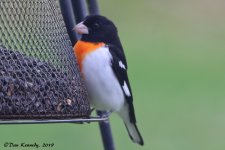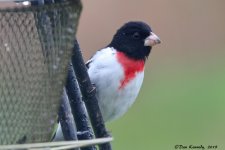snowyowl
Well-known member
These two RBGR visited my feeders during the last two days. I suspect that the one with the orange breast markings may be a hybrid. Sibley's shows something somewhat similar and calls it a hybrid Black-headedxRose-breasted Grosbeak. I would be very interested to hear what other people think.







